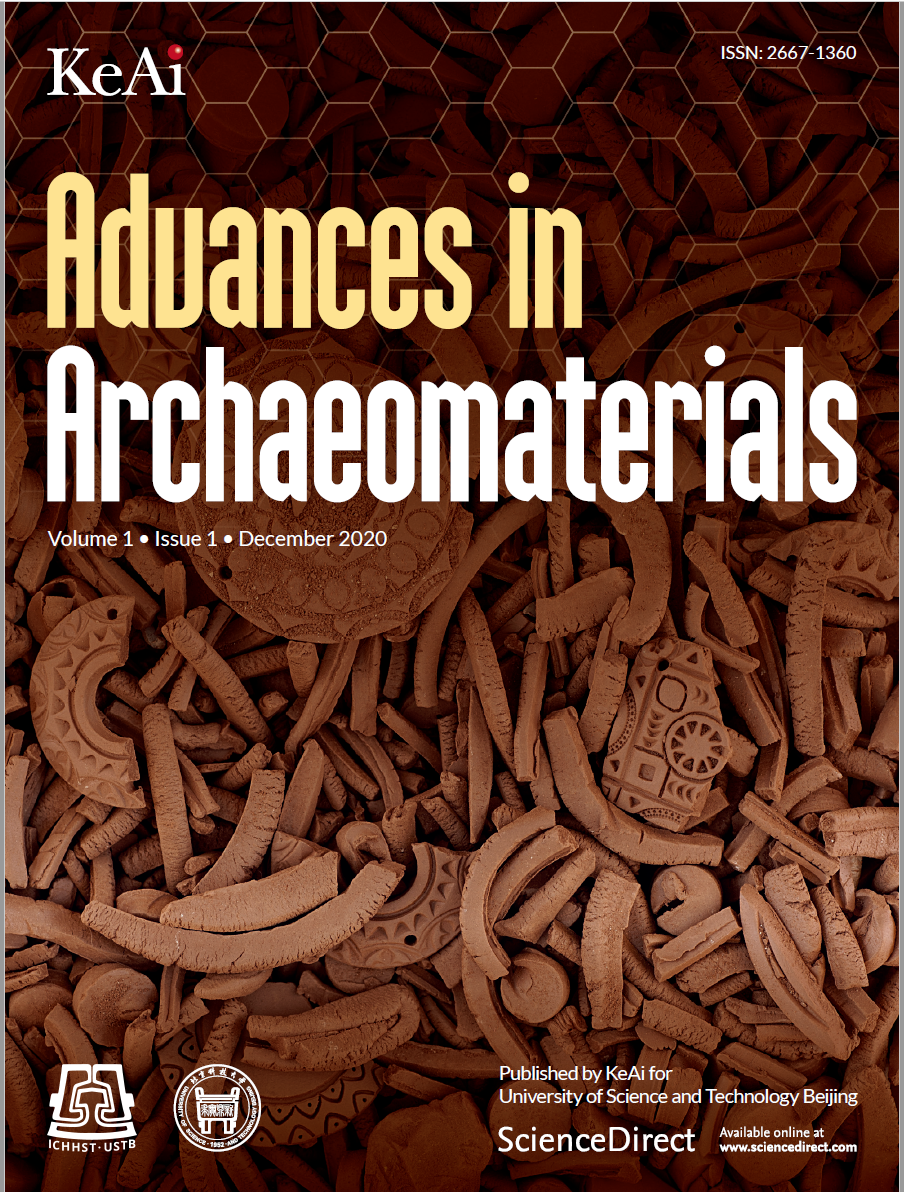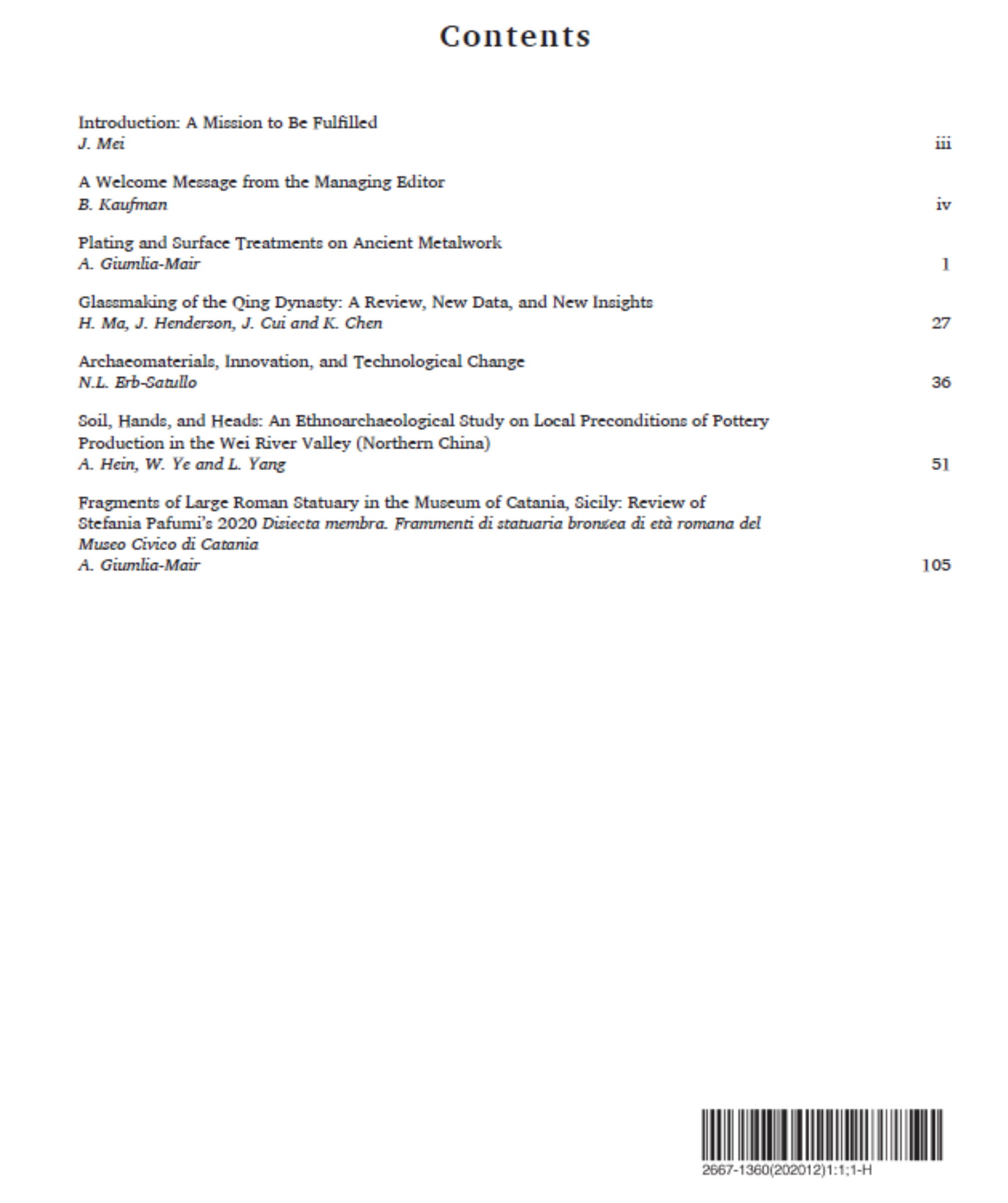《古代材料研究进展(英文)》期刊上线出版
时间: 2021-03-08 点击: 次
来源:本站原创 作者:admin
北京科技大学科技史与文化遗产研究院主办的开放获取期刊《古代材料研究进展(英文)》(Advances in Archaeomaterials)近期正式线上出版。这是我国古代材料研究领域的第一本英文期刊。
期刊由北京科爱森蓝文化传播有限公司合作制作出版发行,基于爱思唯尔(Elsevier)和科学出版社的先进办刊理念和ScienceDirect共享平台,采用国际同行评议、完全开放获取的办刊模式。
期刊主编由英国剑桥李约瑟研究所所长、北京科技大学访问教授梅建军教授担任,北京科技大学陈坤龙教授任副主编,美国伊利诺伊大学厄巴纳-香槟分校柯锋(Brett Kaufman)博士任执行主编,北京科技大学刘思然博士、马泓蛟博士、美国俄克拉荷马大学Thomas Fenn博士、英国牛津大学Anke Hein博士担任助理编辑。此外,期刊邀请了来自中国、美国、英国、德国、意大利、奥地利、塞浦路斯、印度等国家和地区的知名专家组成了国际化的编委会团队,以保障期刊的学术品质和国际化视野。
作为古代材料研究领域的国际学术交流平台,《古代材料研究进展(英文)》旨在推进自然科学与人文社会科学的交叉融合,拓展并深化考古学、历史学、科学技术史等学科的深度与广度,为文化遗产的价值认知、科学保护和合理利用提供基础支撑。期刊将聚焦物质遗存研究的最新理论发展、技术应用和综合阐释,主要发表原创论文、综述及评论,涵盖科技考古技术与方法、区域案例研究、有机与无机材料制作工艺重建与溯源、文物保护技术与材料、科学技术史和工业遗产保护等领域,并将致力于向国际学术界推介重要的中文研究成果。
后续将陆续推出期刊创刊词和首批论文推介,敬请学界同仁关注并惠赐稿件。
期刊主页:
http://www.keaipublishing.com/en/journals/advances-in-archaeomaterials
接收稿件类型:
Original Research Articles,
Review Articles, Editorial,
Book Reviews,
Translations.
投稿须知:
http://www.keaipublishing.com/en/journals/advances-in-archaeomaterials/guide-for-authors

期刊封面

首期论文目录
创刊词
Introduction: A Mission to Be Fulfilled
Jianjun Mei
Editor-in-Chief
I am delighted to say a few words to mark the launch of Advances in Archaeomaterials (AIA), a new English-language journal dedicated to the promotion of research on the cross-disciplinary investigation of historical materials. Why is this journal a necessary addition to the several that already exist in the field of archaeological science, such as Archaeometry and Journal of Archaeological Science? To answer this question, some reflections from a historical perspective may be helpful.
AIA is sponsored by the University of Science and Technology Beijing (USTB), with the Institute for Cultural Heritage and History of Science & Technology (ICHHST) playing a key role in bringing it into being. Founded in 1974 and formerly known as the Archaeometallurgy Group and the Institute of Historical Metallurgy and Materials (IHMM), ICHHST has undergone many significant transformations over the past four decades, as evidenced by the growth of the staff and postgraduate student body, as well as the expansion of research fields, from the history of metallurgy to archaeological science, cultural and industrial heritage, conservation science, and science and technology studies. The development of the ICHHST has been shaped by its long-standing commitment to maintaining international academic links and exchanges, initiated by the late Professor Tsun Ko (Ke Jun), who, together with the late Professor Robert Maddin, established the International Conference on the Beginnings of the Use of Metals and Alloys (BUMA) in 1981. BUMA conferences have become a major international platform for scholars from all over the world to gather together every three or four years to share their most recent research on archaeometallurgy.
Professor Ko pioneered the idea of establishing an English-language academic journal to promote Chinese studies in archaeometallurgy internationally many years ago. When I returned to China from Britain to take up directorship of the IHMM in 2004, he asked me to do two things: organize the BUMA VI conference and explore the possibility of cooperating with our Japanese colleagues to replace the Bulletin of the Metals Museum, which had just ceased publication. BUMA VI was held in Beijing in September 2006, but establishing an English-language journal with a focus on archaeometallurgy proved harder to achieve at that time.
In 2016 the ICHHST established an annual bilingual (Chinese and English) symposium series titled Archaeomaterials Studies, which has proved to be a great success. Five symposia have now been organized, highlighting the emergence of a new generation of Chinese scholars working on ancient materials as well as the need for an English-language journal covering recent studies in archaeomaterials in China.
It was only after the success of the Archaeomaterials Studies Symposium in 2016 that the idea of a journal was revived, as the ICHHST considered it a major strategic part of its ambitious program of internationalization. Professor Qian Wei, director of the ICHHST, and his colleagues at the Institute, especially Dr. Brett Kaufman, who had just joined the ICHHST as a faculty member, subsequently held many discussions on the aims and scope of the planned journal and met with potential publishing partners. The breakthrough finally arrived when an agreement was signed between the ICHHST and KeAi Publishing in May 2020.
It will certainly take some time for the newborn AIA to become widely recognized as a credible avenue for publishing research on archaeomaterials, and I would like to take this opportunity to thank many colleagues and friends for their generous support and trust in joining our Editorial Board and offering their research manuscripts. I am especially grateful to Kaufman, now an assistant professor at the University of Illinois, for his hard work on overseeing production of this inaugural issue as managing editor. I am confident that with its roots in China and a focus on cutting-edge research, review, and synthesis, the AIA will develop its own special academic characteristics, stimulating and nurturing research on archaeomaterials in the years to come.

